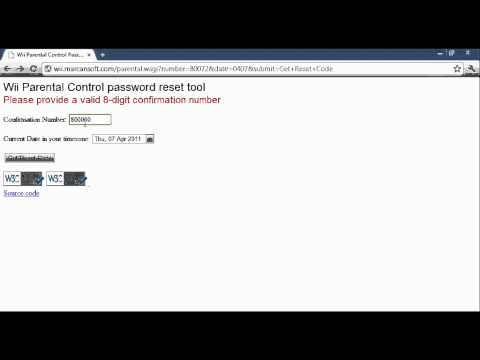

0x14C1 was added to produce the final result.įor the 3DS algorithm, only constants were changed: the polynomial was changed to 0圎DBA6320 and the addition constant became 0x1657. Mostly inherited from the Wii/DSi algorithm which used CRC-32 (0圎DB88320) with custom XOR-out (0xAAAA). Parental controls reset functionality version The following refers to the functionality which generates the Parental Controls "Master Key". Upon exit, the system reboots instead of simply returning to home menu. NS launches SAFE_MODE_FIRM for running this title, when the UPDATEFLAG is set during system boot. When one selects "Cancel" from here on retail, the system will shutdown. using the eShop, on a system version less than the current one.
#3ds master key generator zip update#
On retail units, this title is accessible in scenarios where you have to update via the Internet to use certain 3DS software other than the home menu. On dev units, this title can only be launched under certain conditions. The system updater title is identical to the regular system settings, except only system update is accessible with this. Once that's done it will continue with the usual system-format messages proceeding will result in the NNID cookie, potentially still present on NAND backups or multiboot scenarios, being invalidated until the next sign-in (at which point even old sessions will be valid again). If there's a linked-NNID, it will then display: "Are you ready to connect to the Internet to check whether data can be formatted"? Continuing will only result in connecting to wifi for checking in with Nintendo's servers, which may fail if the console is banned. When you first enter the System Format menu, it will check if a NNID is linked. Since that data is no longer usable, the system then deletes the two above SD/NAND directories. Since this keyY was updated, the data stored on SD card(sdmc/Nintendo 3DS//) and the data under nand/data/ is rendered useless, since that data used the old keyY. This command updates the high u64 of the keyY stored in d. Most of the System Format is done with FS:InitializeCtrFileSystem. This phenomenon has been known to lock users out of executing widely used exploits like Bannerbomb3, which need access to Data Management to trigger. Barring patched RSA sig checks, this will prevent a user from viewing the 3DS and/or DSiWare Data Management menu depending on which NAND(s) the offending title(s) is installed. Deleting titles removes the title data from the title.db and import.db, and deletes the directory of the content.Īdditionally, if a CTR-NAND or TWL-NAND installed title passes authentication, but has a fake-signed ticket, System Settings will call " svcBreak" upon entering Data Management -> 3DS | DSiWare. If a title doesn't pass authentication, a placeholder icon(light grey with a '?' in the center), name ('?') and a size of zero are used. If the title passes authentication, Data Management decrypts/reads the ICN data from the executable NCCH( CXI) and displays it along with the archived title size. For each title listed, it checks if the title is authentic(via the. From the title.db file, AM gets a list of installed titles, title sizes and the name of the ".cmd" file for each title, which is used to check the authenticity of the title data(product code, title version, and if an electronic manaual is used, is also kept for each title, in the title.db, but won't be used by the Data Management Utility).

When managing 3DS Software installed to the SD Card, the title.db is read by the core receiving AM commands. Here you can manage 3DS extra data, and 3DSWare/"Software".


 0 kommentar(er)
0 kommentar(er)
